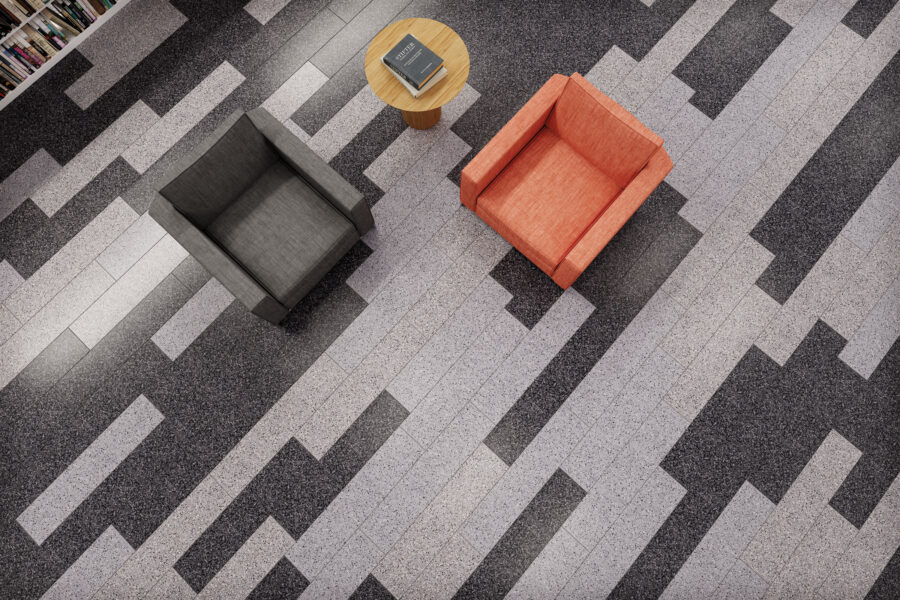Story at a glance:
- A life cycle assessment (LCA) quantifies the environmental impacts of a product or service from its creation to its end.
- LCAs play a decisive role in material selection using circular design principles.
Designers and builders concerned about sustainability strive to lighten the environmental footprints of their structures. They may also wish to earn a higher LEED certification for their existing builds. Some are searching for a better way to present their strides toward net zero to investors. For achieving these and similar objectives, they depend on life cycle assessments (LCAs) for justification.
In this article we explain what LCAs are and how they’re conducted by considering the example of a building.
What is a Life Cycle Assessment?
A life cycle assessment, also called a life cycle analysis (LCA), is a quantitative methodology used to calculate the environmental impacts of a product, material, process, or service from its beginning to end. These impacts include the global warming potential (carbon emissions), ozone depletion, eutrophication potential, particulate matter pollution, ecosystem or human toxicity, ocean acidification, or water use.
The objective of a LCA is to inform those conducting them on how they can reduce their environmental footprint by eliminating waste of natural resources and pollution associated with production. It specifies precisely where they can improve in the manufacture, use, and supply chain processes involved in their product or service.
A comprehensive guide of the American Institute of Architects is an ideal place to start, including a listing of numerous LCA tools and several LCA examples. The following sections are based on the AIA guide.
5 Stages of LCAs
For products, there are five discrete stages that are analyzed for environmental impact in a LCA:
1. Raw Material Mining & Extraction
2. Processing of Raw Materials & Product Manufacture
3. Product Transportation & Wholesale Distribution
4. Product Usage & Retail Sales
5. End-of-Life Disposal or Recycling
However, all five stages are not included in some types of LCA, as we’ll see in the next section.
4 Types of LCAs

REGUPOL upscale is an innovative alternative to terrazzo, ceramic tile, and luxury vinyl tile and plank. Rendering courtesy of REGUPOL
There are four types of LCAs. It is important to know which type is analyzed when comparing two or more assessments because they provide different information.
1. Gate-to-Gate. This is the simplest LCA of greatest use to a company that wishes to streamline its manufacturing method because it includes only what happens inside the factory gates.
2. Cradle-to-Gate. This type of LCA includes all the stages between material mining from the environment and the purchase of a product at a retail location.
3. Cradle-to-Grave. Rooted in a linear economy model, this LCA type looks at what happens from mining until disposal by the end user.
4. Cradle-to-Cradle. Based on a circular economy view, this LCA examines the entire life cycle of a product, including what happens to the product after its end-of-life stage. It specifies whether it was upcycled or downgraded, and how.
How to Achieve LCAs
Like other algorithmic modeling studies, LCA is accomplished through a series of small repetitive cycles called iterations. The four steps described below may not happen sequentially, especially if you modify the goal or scope during the process. They may also repeat as the assessment proceeds before results are finalized.
To make the process less abstract, we’ll consider the life cycle assessment example of a building.
Step 1: Setting the goal and defining the scope
In this stage our goal is established. We want to determine the global warming potential (GWP over a 100-year period) and measured as carbon dioxide equivalents of a building with a 100-year lifespan in a cradle to cradle LCA. The functional unit of the assessment is the building as a whole. The impact category is the GWP. The product life cycle length is 100 years. These choices define which question an LCA answers: What is the GWP100 of a building during the first 100 years of its operational life including the embodied carbon it contains?
Considering other impact categories would generate other questions.
Step 2: Life Cycle Inventory (LCI)
In the second stage primary data on all the environmental inputs and outputs are collected and uploaded. In the case of our building example, the quantity and type of energy (renewable or non-renewable) needed to mine, extract, process, transport, use, and reuse all the material components in the building are determined. The LCI includes both embodied and operational carbon.
If the components came from different places, each energy data point must be inputted individually. If there are any other sources of carbon emissions generated through all or any of the life cycle stages, they must be included as well. If primary sources aren’t available, then secondary sources derived from LCA tool databases and based on industry averages for a given location are employed. Different LCA tools use different databases like EcoInvent or Carbon Minds. Primary data yield more accurate results.
Step 3: Life Cycle Impact Assessment (LCIA)
In the third step of our example, the computation of GWP occurs by the LCA tool. If other environmental impact metrics—for example, water scarcity—are being considered, the tool would first categorize the inventory data collected in the previous step into impact categories. Then, the model runs through the data point by point and scales them to the functional unit (i.e., our building). The result is an impact estimation.
Step 4: Interpret Results
Although you may think the fourth step is the last, the LCA tool is actually interpreting the results during the entire analysis. This continuous interpretation affords the tool the chance to track the progress of data inclusion in the calculation, and, if it deems necessary, iterate certain steps.
Finally, the LCA tool generates a report when the interpretation is complete. Graphs from all the computations are arranged and presented. The question in Step 1 is answered.
With the report a designer or builder may alter their plans. If emissions are too high, for example, they may choose alternate materials or sources.
Benefits of a Life Cycle Assessment
Some of the benefits of conducting a LCA include:
1. Data-driven reason to reduce environmental impacts when shown to be high
2. Rationale for choosing the more sustainable option when used to compare two materials or processes
3. Demonstration to clients and investors of your commitment to sustainability
4. Proof of compliance with certain sustainability regulations such as the Corporate Sustainability Reporting Directive
5. Predictive power of modeling future impacts as a prospective LCA based on an extrapolation of pilot stage data that avoids costly mistakes later
Examples of Life Cycle Assessments

“We subject our products to extensive tests, we receive test reports from neutral testers, and we carry out very close internal tests ourselves. All for the benefit of our customers and for safe and sustainable products,” says REGUPOL’s John Aten. Rendering courtesy of REGUPOL
As the building sector becomes more sustainable, examples of life cycle assessments become easier to find. Here are a few examples of recent LCAs.
REGUPOL
Cradle to Cradle Bronze-certified REGUPOL gets its name from the acronym of its flagship product, recycled gummi polymer. Composed of 75 to 95% recycled content, either from shredded and cleaned SBR tire rubber (100% post-consumer waste) or a combination of SBR tire rubber and EPDM color granules (post-industrial waste), the recycled elastomer is used in sports and safety flooring, soundproofing, and related products.
To support its sustainability claims, REGUPOL relies on EPDs and HPDs based on an ISO-compliant LCA. “REGUPOL is committed to product transparency, and EPDs and HPDs are the best way for us to effectively communicate the environmental impact of our products across product categories,” John Aten, vice president of sales and marketing REGUPOL America, previously told gb&d. “We are using these tools to drive innovation and product development and to reduce our global warming potential throughout the full product life cycle. We also are using these tools to evaluate our recycled product architecture versus other non-recycled products and their overall global environmental impact.”
Keilhauer
North American contract furniture manufacturer Keilhauer was promoting collections of carbon-neutral office chairs, side chairs, stools, and ottomans, plus four new carbon-neutral lounge chairs, in summer 2024.
Making a chair or ottoman 100% carbon-neutral requires careful sourcing and consideration of the totality of the product’s environmental impacts, including transportation and disposal. But it’s an ongoing challenge to control every aspect of carbon neutrality.
“We have control over the evaluation and selection of suppliers with whom we work and the source materials,” Josh Belczyk, sustainability officer for Keilhauer, previously told gb&d. “We can control how we consider the proximity of those suppliers to try to reduce transportation costs. And we have control over our own operations and over the design of the product itself.”
The process begins with a cradle-to-grave life cycle assessment of the product and its components. Keilhauer streamlines design and manufacturing to minimize waste, choosing materials that include recycled content and finding additional ways to reduce a product’s carbon footprint.
It can take just three months to add a product to an existing line if Keilhauer has already performed most of the legwork on the sustainability of suppliers and components, or up to nine months for a completely new product with a new supply chain.
Rain Harvest Home
Although a life cycle assessment is usually focused on the environmental impacts of a product or service, a LCA can also analyze the social or economic impacts. All three components comprise a Life Cycle Sustainability Assessment (LSCA).
Robert Hutchison, founder of Robert Hutchison Architecture (RHA), co-designed the three-structure rain harvest home with architect Javier Sanchez of the firm JSa by approaching sustainability through economy.
“Economy for us is doing as little as is necessary. This can mean reducing or minimizing our client’s programmatic interests—while still meeting their original goals. It’s also about developing design solutions that accomplish multiple goals with a single move,” recounts Hutchison in a previous interview with gb&d.
So, economy manifests as an off-grid rain harvest home featuring an onsite water treatment system that is self-contained and gravity-fed. The architects reduced the indoor area of the buildings, constructed entirely of wood, with the intention of building as light on the ground as possible, to lower its carbon footprint, and to promote integration with nature.
Ian P. Murphy contributed to this article.




